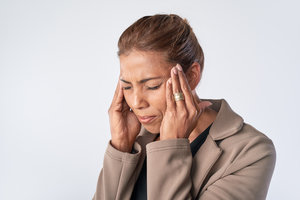
Helping You Solve TMJ Pain
Some 10 million people suffer from some form of TMJ Disorder: from clicking or popping whenever they yawn, to intense migraine-like pain in the area around their ears. The temporomandibular joint is the hinge between your jaw and skull. The bone and muscles permit your jaw to move—not just up and down, but left and right, in and out. This kind of complexity is what makes TMJ Disorder so common, and often so difficult to diagnose.
Modern dentistry has a whole array of TMJ responses—so your first response should be to make an appointment.
For some people, the answer may be a custom-fitted mouth guard to keep them from grinding in their sleep. There’s even a battery-powered sensing device that can be worn at night to alert you when grinding occurs. Another plug-in device helps eliminate spasms and pain by applying moist heat to the source of the pain for several minutes at a time.
If the problem stems from tooth alignment, orthodontic treatment can relieve the stress. Physical therapy, anti-inflammatory drugs, muscle relaxants, and stress management are all possibilities.
The key, as always, is identifying the problem and then finding the response that works best for you. Contact us today if you have unexplained jaw pain or chronic headaches possibly associated with TMJ disorder.
Possible Causes of TMJ Disorder
- Nighttime tooth grinding (bruxism)
- Malocclusion (improper bite alignment)
- Poor head/shoulder posture, causing tension in neck and jaw muscles
- Arthritis in the joint
- Damaged jawbone/ joint structure
- Pinched nerve
